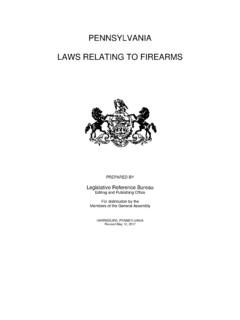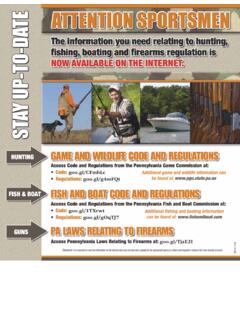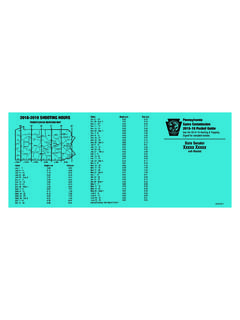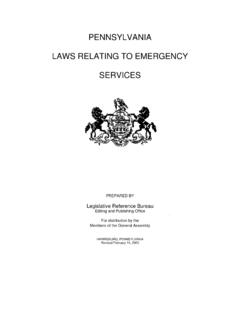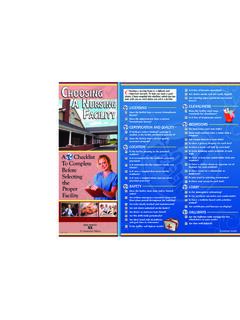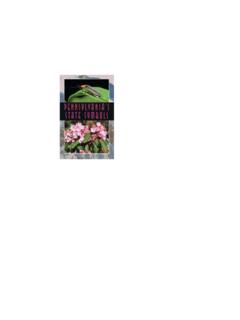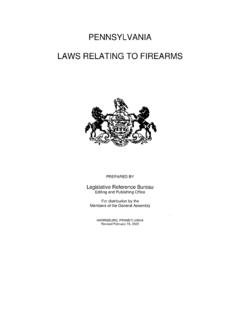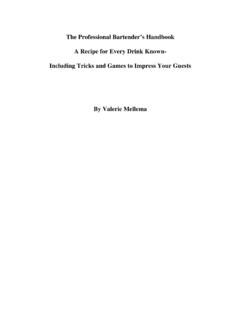Transcription of Common Trees of Pennsylvania
1 Compliments of Your State Senator Common Trees of Pennsylvania Department of Conservation and Natural Resources Bureau of Forestry Harrisburg, Pennsylvania #5005 - 7/06. Introduction Forests have always been important to the inhabitants of the area we now call " Pennsylvania " (Latin for "Penn's Woods"). Pennsylvania 's location spanning 40 degrees - 42 degrees north latitude and its varied terrain support 108 species of native Trees and many other introduced from Europe and Asia. Trees provide a renewable source of lumber, paper, nuts and chemicals.
2 But they are also essential as living filters, removing pollution from the air we breath and the water we drink. Trees provide homes and food for wildlife, and beautify our homes with comforting shade in summer and shelter from winter winds. With wise management, forests can produce these benefits for future generations as they have in the past. The first human beings to hunt and gather plant foods in these forests left stone tools and spearpoints at scattered campsites about 10,000 years ago. Clearing of areas for farming and villages began almost 3,000 years ago.
3 After Europeans settlements were established along the Delaware River 400 years ago, the pace of clearing land for agriculture and the use of forest products for housing, food, fuel and the manufacture of tools, furniture and other goods, increased dramatically and expanded westward across the state. By the early 1900's, all but a few small isolated areas of virgin forest had been cut,leaving landscape of stumps and scrub growth over much of the Commonwealth. Wildfires were a Common occurrence in this brushland and would rage uncontrolled for days, over thousands of acres.
4 Today's forests have grown out of the seemingly barren conditions left after mass cutting and severe fires. Pennsylvania is now nearly 60% forested, having 18 million acres of woodlands. And today, we still derive much of our economy and many comforts from the flora and fauna of Penn's Woods. Medicines, foods, and wood fiber, a cleaner environment, tourism, and recreation are all provided by our forests. This selection of 57 native, and 5 introduced Trees is organized according to leaf shape and arrangement. Each tree is identified by popular name familiar to Pennsylvanians and its complete scientific name.
5 To use this book, first study the drawings on the parts pages, and the glossary until you understand needle-like , simple and compound leaf shapes and alternate and opposite leaf arrangements. Then compare the tree you wish to identify with the following table and study the pictures on the appropriate pages. #. 1. Leaves needle-shaped or linear .. Trees 1-11. 1. Leaves wide and flat 2. Leaves in opposite arrangement 3. Leaf shape #12-18. 3. Leaf shape compound .. Trees #19-22. 2. Leaves in alternate arrangement 4. Leaf shape Trees # 23-52.
6 4. Leaf shape compound .. Trees #53-62t Other sources of information can be found in your local library or bookstore. Popular and scientific names used in this document are from The Vascular Flora of Pennsylvania : Annotated Checklist and Atlas by Ann Fowler Rhoads and William McKinley Klien, Jr., American Philosophical Society, 1993. ii Glossary Axil - The upper angle where a leaf stalks joins the stem or a smaller stem joins a larger one. Alternate - One leaf attached at each node. See opposite and whorled. Capsule - A dry fruit which contains more than one seed and splits open when ripe.
7 Catkin - A compound bloom consisting of scaly bracts and flowers usually of one sex. Deciduous - Refers to Trees which drop their leaves in autumn. Compare to evergreen. Downy - With very short and weak soft hairs. Drupe - A type of fruit having a single seed enclosed in a hard layer and that is covered with soft, often juicy flesh, as in cherries and peaches. Evergreen - A plant that retains green leaves throughout the year. Life span of an individual leaf can be 2-15 years. Leaflet - A leaf-like portions of the blade of a compound leaf.
8 There is no bud in the axil of its petiole. Leaf Scar - The impression in a twig at the point where a leaf was attached. Lenticel - A pore in the bark of young trunks and branches through which air passes to interior cells. Lobe - A division or projecting part of the blade of a leaf. Opposite - Two leaves attached at each node. See alternate and whorled. Pedicel - The stalk of a flower or inflorescence. Petiole - The stalk attaching a leaf blade to the stem. Pith - The spongy material in the center of twigs and young trunks. Sessile - Refers to a plant part having its base attached directly to the stem without an intervening stalk.
9 Stalked - Refers to a leaf or flower having a length of petiole or pedicel between its base and the stem. See sessile. Witches'-broom - Abnormal brushy growth of small branches caused by an infection. Whorled - Three of more leaves or other parts attached to a stem at the same point. iii Parts, Types, and Postions of Leaves iv Parts, Types, And Positions of Leaves, Page 2. v Parts, Types, And Positions of Leaves Page 3. vi 1. Eastern Hemlock (Tsuga canadensis (L.) Carr.). LEAVES: Evergreen needles occur singly, appearing 2-ranked on twigs, flattened, about 1/2" long, dark green and glossy, light green with 2 white lines below.
10 TWIGS: Slender, tough, yellowish brown to grayish brown. Buds eggshaped, 1/16". long, reddish brown. FRUIT: Cones 3/4" long, egg-shaped, hanging singly from the tips of twigs. Under each scale are 2 small, winged seeds. BARK: Flaky on young Trees , gray brown to red brown, thick and roughly grooved when older. GENERAL: A large, long-lived tree , important for construction timber and as a source of tannic acid for tanning leather. Found in cool, moist woods throughout the Commonwealth, Eastern hemlock is the offical state tree of Pennsylvania .



